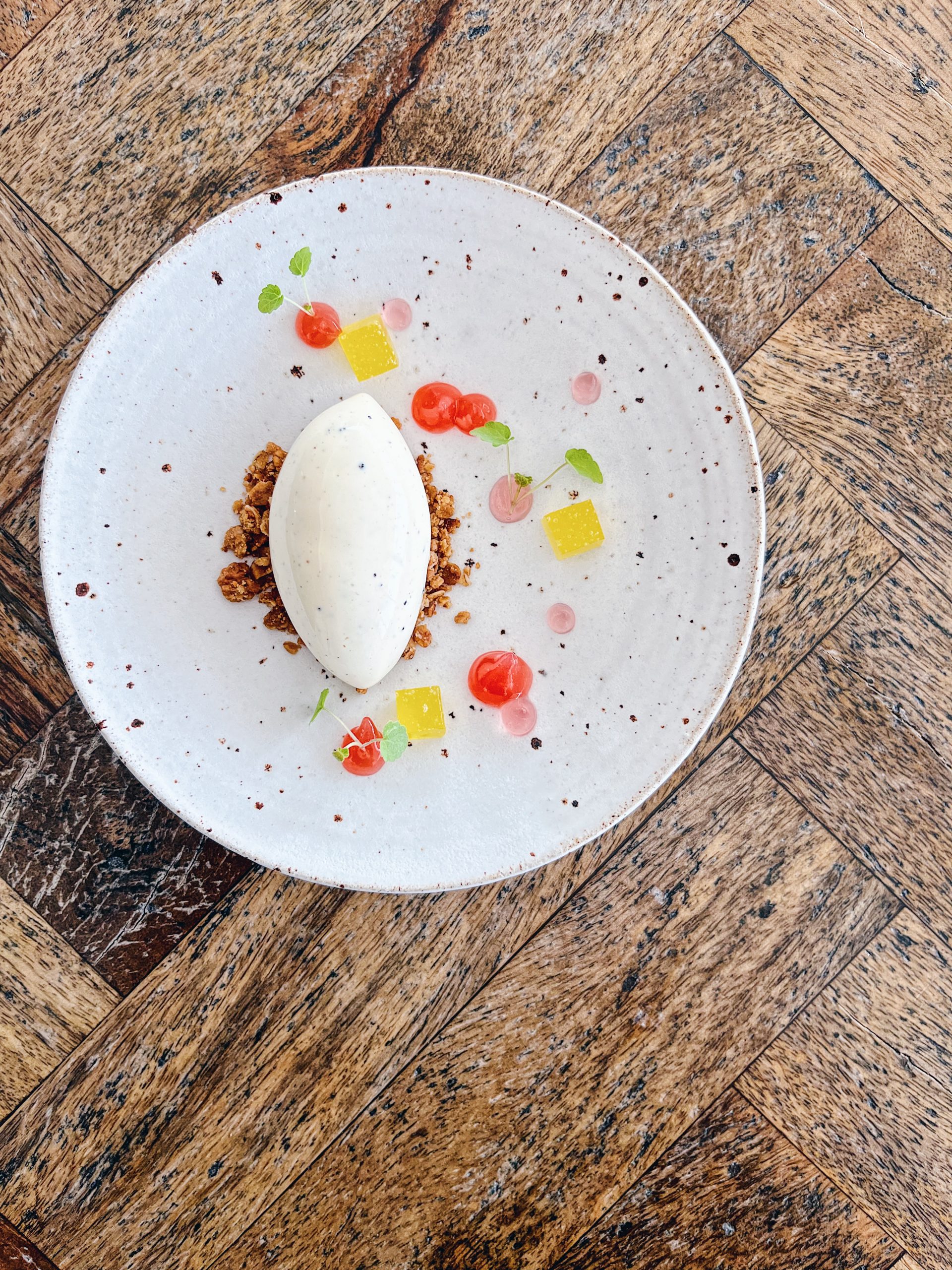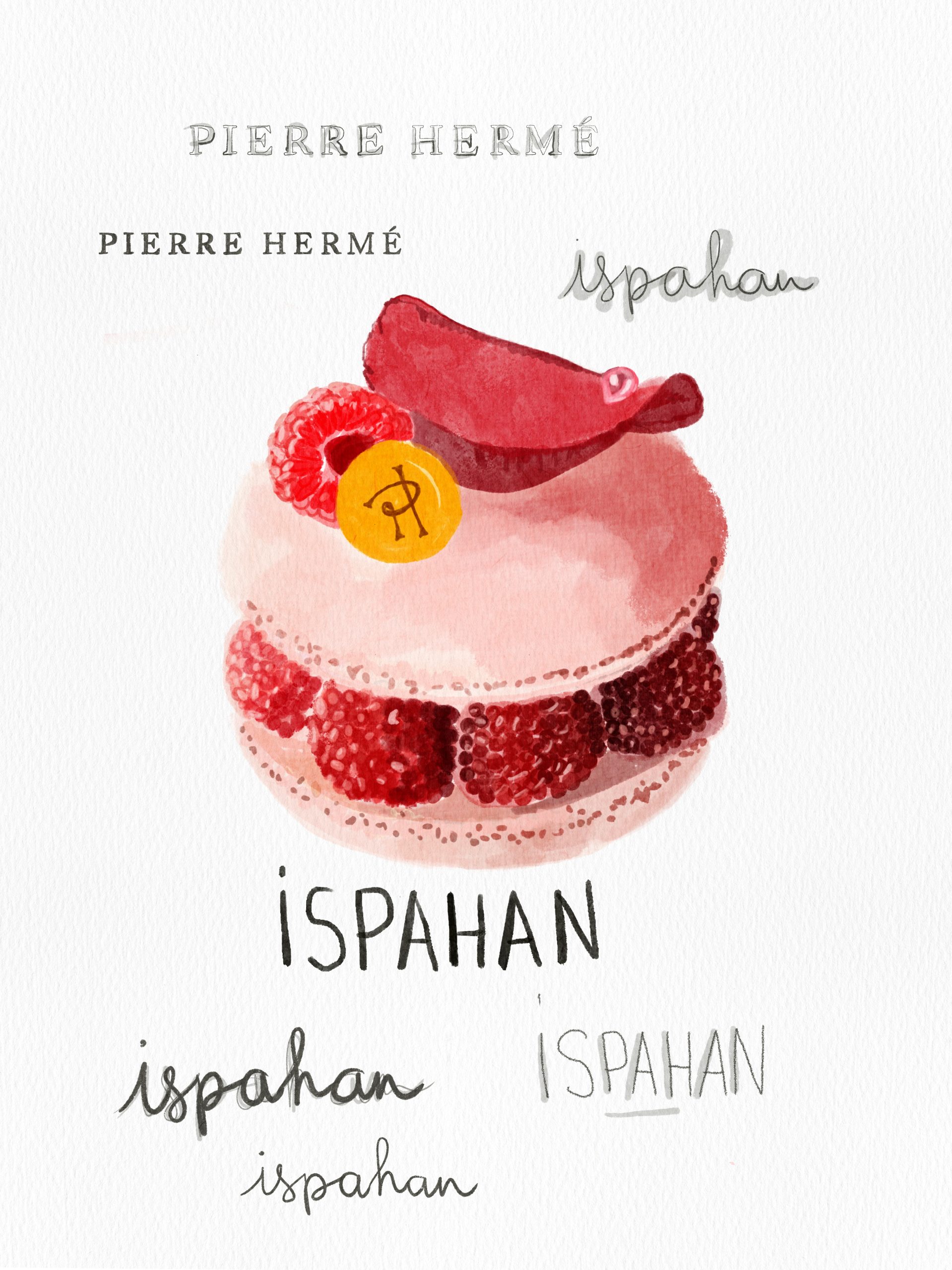
We found a tree, just a few nights before Christmas. A bit of a happy coincidence. Not that we hadn’t looked everywhere before. Sold out or cheap plastic.
And there it was, still wrapped in some sort of net. We named it Charlie; forgot about the pizza we’d set off to eat, and proceeded to carry it home on K’s shoulder across London. We stopped at the shop, the one around the corner, and got a pizza there. Twenty minutes later, we sliced into it, and later that night, we let the multi-coloured lights (with a green chord and cone-like bulbs; that remind me so so much of the ones my grand-mother brought back with her and her children when they moved back from Tahiti to France) lullaby us to sleep.

And at that exact moment. With the twinkling lights and the smell of forest filling our room. That was Christmas. My Christmas.
But really, I’m not sure why I’m telling you that.
You see, I had amazing plans for this year. I wanted to share with you my favourite – old and new – recipes for biscuits to bake during those nights made of wool socks and candles and mulled wine and peeks through the window wishing for snow.
But before I even knew it, Christmas had well gone. Not that we still have Charlie in our bedroom. Perhaps, we’ll go to the park at the end of our street one night, and dig through the earth to make him a new home.
So we’ll have to make it an extended Christmas this year. Recipes from another time for the one to come maybe; if you don’t mind.

After all, I went to every possible shop to find the perfect star cookie cutter. Buying anything star-shaped that came my way. And I no have many. Possibly six too many.
One thing I know for sure though, you won’t have too many zimtsterns. Ever.
Zimtstern à la cannelle
Adapted from Mingou’s beautiful zimstern (via Pauline, the must-visit source for anything Christmas biscuit related)
Just like we’re not in Kansas anymore, Christmas is far gone. However, as I write this, a couple of weeks after it all happened (for us, it was a delicious lunch at the pub with a little too much wine and a lot too-much laughs), I’m snuggled in bed with Ash in my ears and the comforting thought of many biscuits – cut and arranged in plastic containers – ready to be baked at any time. In fact, as long as we have Charlie on and a wreath on our door, I’m not planning on giving up on the holidays.

Zimtstern(s?) are new to me. And really, when I first saw them, I knew they were going to be something special. Beautiful chewy, with a subtle cinnamon flavour. A bit like a macaron and yet not quite.
Mingou’s recipe isn’t traditional as it calls for flour. I guess it makes them a little bit cakier (in a good way) and way easier to work with.
I made the soft dough and rolled in – still in between two sheets of baking paper – then cut it and baked it for barely ten minutes. As Mingou says, it’s definitely better not to overbake them as they’ll turn quite hard. The edges will just start to brown slightly when they’re ready.

As they cool down, make the glaze, a simple royal icing; I wanted to add vanilla, but then I forgot, although it would make a lovely finishing touch. Next time, tomorrow perhaps?
When it comes to dipping the biscuits in, place them in the icing, then go up and down to get rid of the excess. Finally you can tap the biscuit slightly on your table to smooth the glaze.

Zimtstern à la cannelle
Makes around 50 small biscuits.
200 g ground almonds
100 g icing sugar
60 g caster sugar
3 tsp ground cinnamon
1 tsp maldon sea salt
160 g plain flour
2 egg whites
Preheat the oven to 150°C and line two baking trays with baking paper.
In a bowl, combine the dry ingredients. Add the egg whites and mix until it forms a dough. Roll in between two sheets of baking paper to around 8mm thick. Cut out using your favourite cutter, from what I’ve seen, the must is a six-point star, something that seemed to be absolutely unfindable in my corner of the world.
Arrange the biscuits onto the prepared baking trays and bake for around 10 minutes, or until slightly puffed up and the edges just begin to brown (ever so slightly).
Transfer to a wire rack and allow to cool down completely.
For the royal icing
2 egg whites
380 g icing sugar
seeds from one vanilla pod
Prepare the icing by mixing the egg whites with the icing sugar until smooth. It should be soft to touch, but not too runny. Gently dip the top of one biscuit into it, then remove, allowing the icing to drip for a couple of seconds. Place back onto the baking sheet, iced-side up. Repeat with the remaining biscuits and allow them to set at room temperature for a couple of hours.
The zimtsterns will keep in an airtight container for a couple of weeks.


















